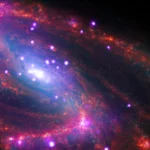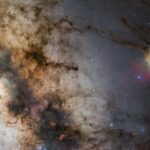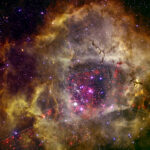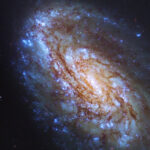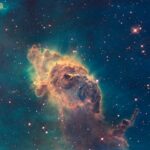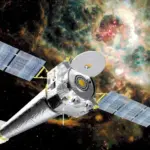The Eagle Nebula, also known as the Star Queen Nebula or Messier 16 (M16 for short), is a cluster of stars and an area of active star formation about 5,700 light-years from Earth (it had previously been considered to reside 7,000 light-years away, but a recent study using data from the Gaia telescope published in the Astrophysical Journal in Jan. 2019 suggests it’s quite a bit closer.)
The Eagle Nebula is located in the constellation Serpens and covers an area of 70 by 55 light-years. It is home to the iconic Pillars of Creation, made famous by an image taken by the Hubble Space Telescope in 1995.
Though the nebula is not visible to the naked eye, you can see it using a small telescope or even a good pair of binoculars. It’s most clearly visible in July, according to NASA. You would need a much larger telescope, along with good weather conditions, to see the Pillars of Creation.
The nebula is named for its shape, which is said to look like an eagle with outstretched wings. The name “Star Queen” comes from American astronomer Robert Burnham, Jr., who thought the central pillar of the galaxy looked like the silhouette of a Star Queen, according to the online Messier Objects catalogue.







![Space Streams - Nebula [Ambient] image](https://space-streams.com/wp-content/uploads/2024/11/space-streams-nebula-150x150.png)

